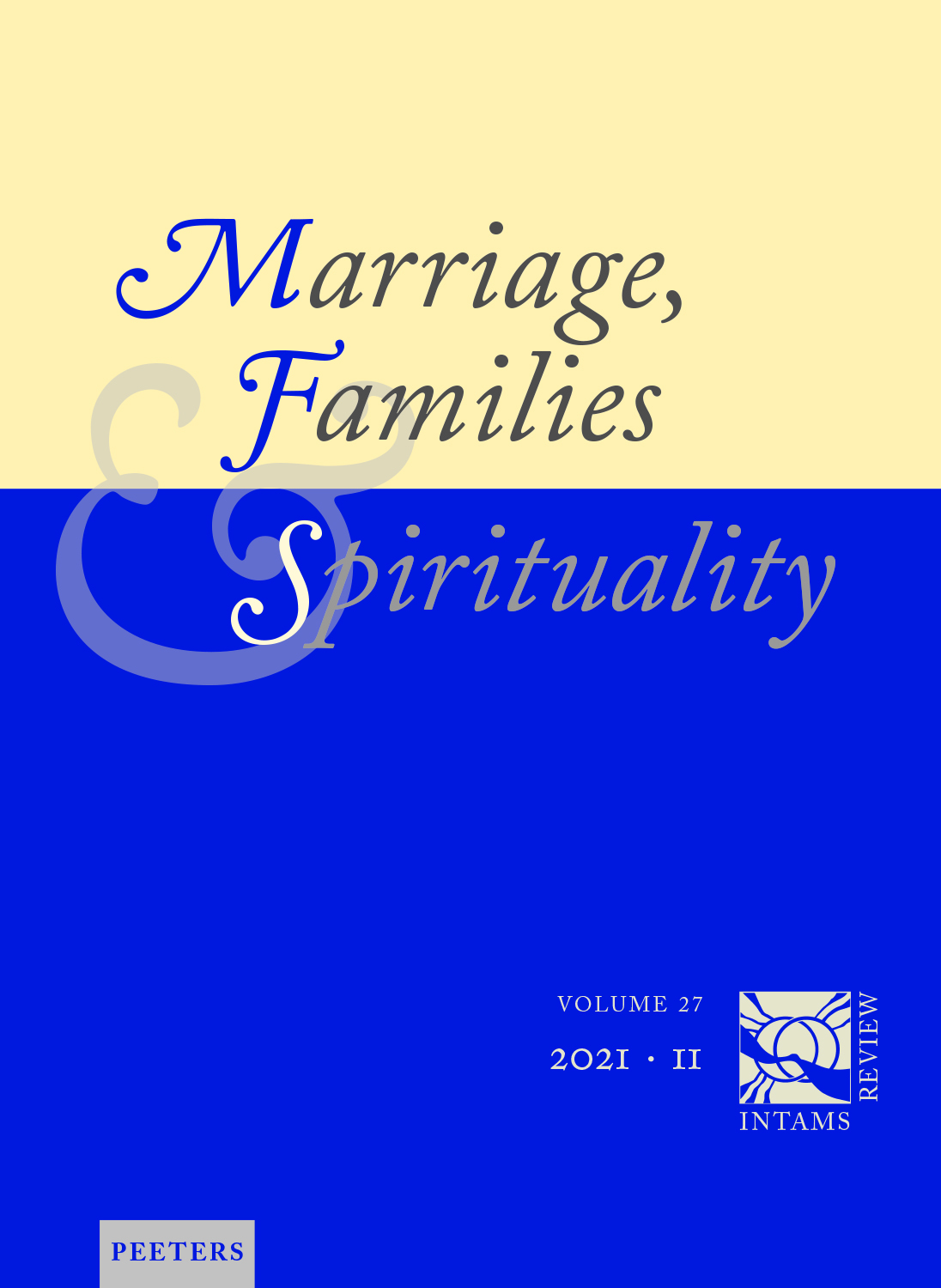 previous article in this issue previous article in this issue | next article in this issue  |

Preview first page |
Document Details : Title: How Does the Rainbow Find its Way into the Family? Subtitle: Formation History and Daily Life of Rainbow Families in Germany Author(s): RUPP, Marina , BUSCHNER, Andrea Journal: Marriage, Families & Spirituality Volume: 19 Issue: 1 Date: 2013 Pages: 70-95 DOI: 10.2143/INT.19.1.3007296 Abstract : The article first provides basic information on relationships and parenthood of same-sex couples in Germany and on the current state of research on the topic, and then focuses on the varying formation histories of rainbow families and their implications for the concrete realisation of parenting-roles in daily family life. – Besides the rather few adoptive and foster families, there are two major groups: families with children who were born in the homosexual relationship and those with children from an earlier – to a great extent heterosexual – relationship. For children belonging to the first type, it is the most natural thing in the world to grow up with two mothers or two fathers, while children in the latter group look back on a decidedly dynamic family history, in which they have had to deal, amongst other things, with the separation of their parents. Further differences in the family constellation depend on the role of the other biological parent living outside the household. If the child was born into a relationship – which is generally due to a common wish for a child of both partners – the childcare responsibilities are predominantly shared by both parents. This implies that the non-biological parent strives for the assumption of parental responsibility through a stepchild adoption with this idea being generally supported by their partner. In many cases, this wish has been fulfilled; in some families, certain formalities still have to be completed. The other biological parent – which is usually the father or sperm donor – is involved in many different ways. The spectrum ranges from 'not available' to regular contact. The picture in stepfamilies is different, however. The other biological parent is mostly 'available', has part-custody and generally keeps in contact with the children. This relationship competes with the social parent, who wants to adopt a parental role, in so far as the natural parent does not want to cap it. Therefore, a relatively high number of social parents with the desire for formal recognition of their relationship to the child are faced with significantly less partners who support this plan or consider it achievable in terms of a stepchild adoption. – The differences can be seen – although not very clearly – in the social parents’ participation in the upbringing of the children and the division of related tasks. Their participation is somewhat less pronounced in stepfamilies than in families with a mutual child. However, it should be noted that the social parents are involved to a great degree in both family constellations. The involvement of the social parent is largely determined by the age of the child, or the age at the time when the parents came together into the homosexual partnership. The relationship between social parent and child is described more often as a parent-child relationship when the children are younger, which also leads to a more equal distribution of familial and professional tasks among the partners. In addition, the social parent’s parental involvement is higher in a civil union than in a couple without a formally legitimised partnership. – The article supports earlier research results which attest to a tendency towards a great and equal parental commitment in rainbow families, and to a high interest in taking over responsibility for the children. |
|


